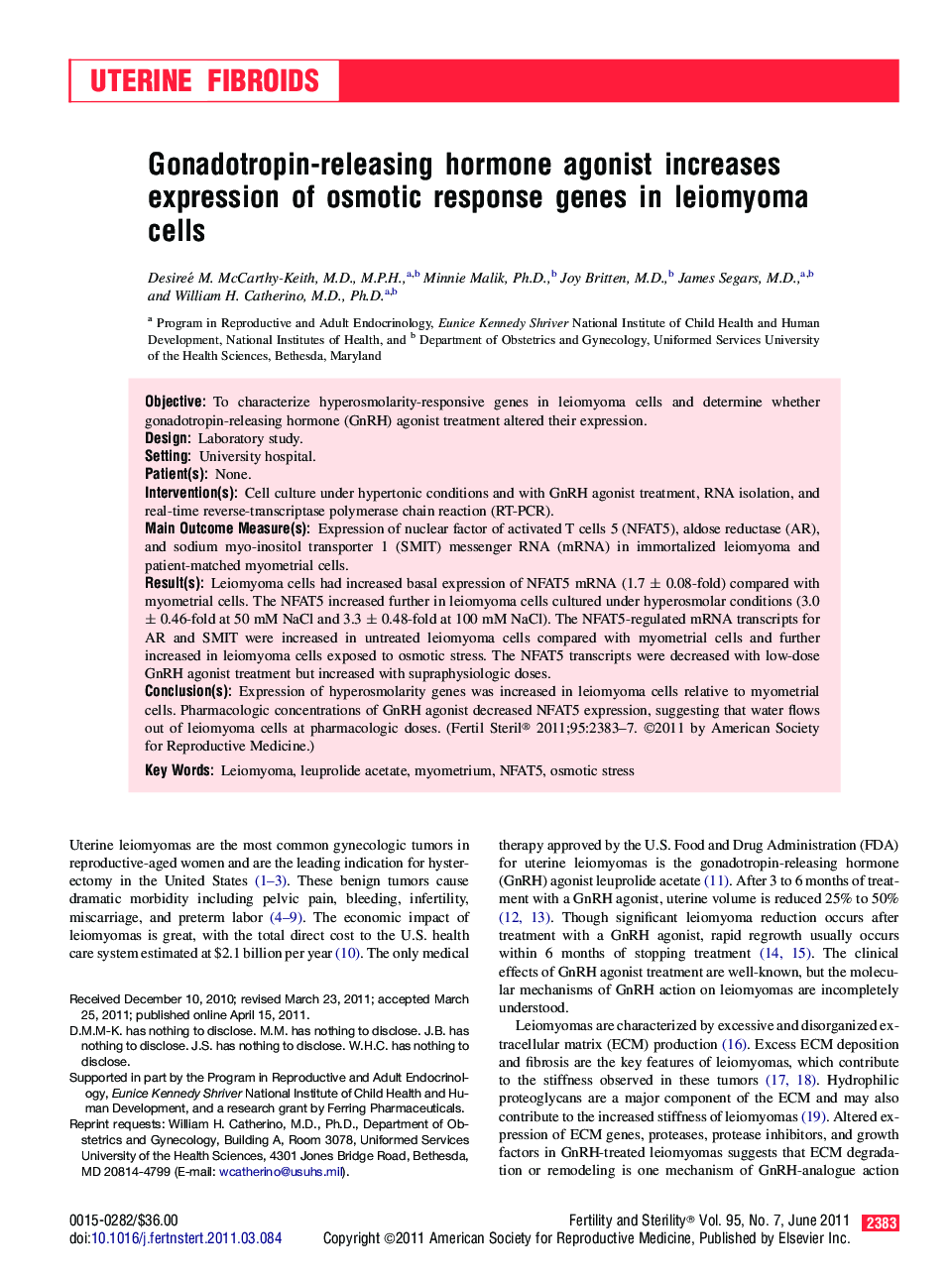| Article ID | Journal | Published Year | Pages | File Type |
|---|---|---|---|---|
| 3937786 | Fertility and Sterility | 2011 | 5 Pages |
ObjectiveTo characterize hyperosmolarity-responsive genes in leiomyoma cells and determine whether gonadotropin-releasing hormone (GnRH) agonist treatment altered their expression.DesignLaboratory study.SettingUniversity hospital.Patient(s)None.Intervention(s)Cell culture under hypertonic conditions and with GnRH agonist treatment, RNA isolation, and real-time reverse-transcriptase polymerase chain reaction (RT-PCR).Main Outcome Measure(s)Expression of nuclear factor of activated T cells 5 (NFAT5), aldose reductase (AR), and sodium myo-inositol transporter 1 (SMIT) messenger RNA (mRNA) in immortalized leiomyoma and patient-matched myometrial cells.Result(s)Leiomyoma cells had increased basal expression of NFAT5 mRNA (1.7 ± 0.08-fold) compared with myometrial cells. The NFAT5 increased further in leiomyoma cells cultured under hyperosmolar conditions (3.0 ± 0.46-fold at 50 mM NaCl and 3.3 ± 0.48-fold at 100 mM NaCl). The NFAT5-regulated mRNA transcripts for AR and SMIT were increased in untreated leiomyoma cells compared with myometrial cells and further increased in leiomyoma cells exposed to osmotic stress. The NFAT5 transcripts were decreased with low-dose GnRH agonist treatment but increased with supraphysiologic doses.Conclusion(s)Expression of hyperosmolarity genes was increased in leiomyoma cells relative to myometrial cells. Pharmacologic concentrations of GnRH agonist decreased NFAT5 expression, suggesting that water flows out of leiomyoma cells at pharmacologic doses.
